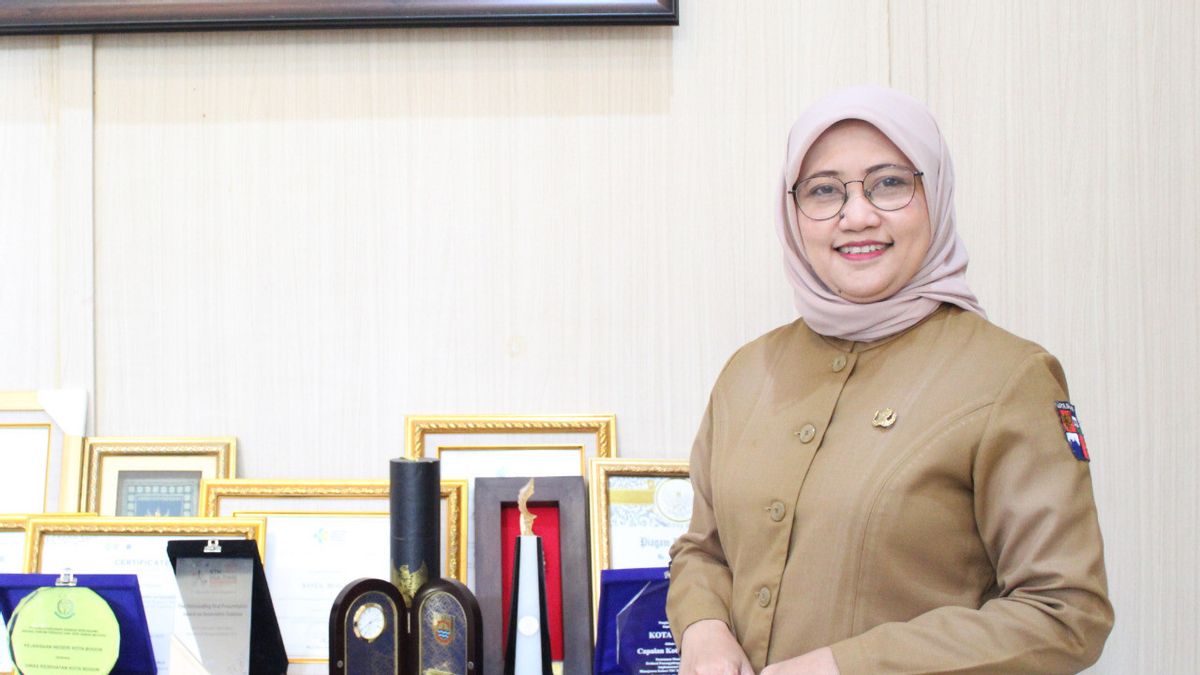BOGOR - The Bogor City Health Office (Dinkes) supervises infectious diseases with early alert systems and responses (SKDR) in responding to the increasing cases of Varicella (waterpox) and Mumps (doping) in several regions in Indonesia.
The head of the Sri Nowo City Health Office, Retno, in his statement said that although cases of chickenpox and gondongan increased nationally, cases in Bogor City tended to decline.
"When compared to the number of cases in September 2024, the trend of cases of chickenpox decreased from September 362 cases to 329 cases in October 2024, meanwhile, Gondongan cases tended to be stable, where in the period September 149 cases and October 153 cases," said Retno, Tuesday, October 5.
Meanwhile, the distribution of cases based on the place for the period 1-24 October 2024, the discovery of the largest case of chickenpox was found in the working area of PKM Mekarwangi (26 cases), while the discovery of the largest number of hinting cases was found in the working area of PKM Bondongan (15 cases).
The cases of Cacar Air and Gondongan that clustered (clusters) in Bogor City have not been found in the period 1-24 October 2024.
Retno explained that varicella and lumps are generally considered endemic diseases in many countries, including Indonesia, which means cases are always at a more stable level, although there can be a slight seasonal fluctuations.
Mumps (voluntary) and Varicella (waterpox) are infectious diseases that are not included in KLB/Vice Potential Diseases in accordance with PMK 1501 of 1501.
SKDR focuses on diseases that have great potential to cause serious outbreaks, deaths, or severe complications in a short time.
There are 24 types of infectious diseases that are monitored, such as dengue fever, barbarus, acute diarrhea, pertussis, diphtheria and pertusis.
"Although infectious, it usually does not cause serious complications or deaths in most cases, especially among children. The health impact of the community is considered lower than other diseases monitored in SKDR," said Retno.
These two diseases do not cause a high mortality rate, so they are not considered a public health threat that requires strict monitoring through systems such as SKDR.
The spread of mudps and varicella tends to be more restricted to certain population groups (such as children in schools), so it is not considered a disease that could cause a major national or regional outbreak.
In general, Retno explained that variella or chickenpox is an infectious disease caused by the variella-zoster virus.
This disease is easily spread through the air and direct contact with the liquid from the melting of the patient's skin. Symptoms usually appear 10-21 days after exposure, beginning with fever and followed by a red rash that turns into a melting filled with fluid throughout the body. After a few days, this overflow dried up and became a crust.
Although generally not serious and can recover on its own, chickenpox can cause complications in infants, adults, pregnant women, or individuals with a weak immune system, such as skin infection and pneumonia. Waterpox treatment focuses on reducing symptoms, such as reducing fever, overcoming itching, and ensuring the body remains hydrated.
Meanwhile, he said, lumps or gondonganan are infectious diseases caused by the mumps virus. This disease mainly affects children, but adults can also be infected if they have never been exposed or vaccinated.
Gondongan spreads through saliva splashes when sufferers cough or sneezing, as well as through contact with a virus-contaminated surface.
Symptoms of gondongan usually appear 16-18 days after exposure and begins with fever, headache, muscle aches, and loss of appetite. The characteristic feature is swelling in the parotic glands (near the lower jaw) which causes the face to appear swollen around the cheeks and jaw.
Although generally self-healing in a few weeks, lumps can cause complications, such as thyroid inflammation in men, ovarian inflammation in women, or in rare cases, inflammation of the brain (encephalitis). MMR vaccination (measles, lumps, rubella) is the most effective way to prevent inflammation and is given from an early age in two doses.
Retno said, the control of mudps and variella is carried out through a routine disease control system by the Puskesmas, such as curative action against cases and cases recorded in every medical record of the Puskesmas.
SEE ALSO:
"The Bogor City Health Office urges the public to apply clean and healthy living behavior (PHBS) and consume foods with balanced nutrition as self-protection against various types of diseases," he said.
Furthermore, he said, visiting or reporting to health workers at health centers and hospitals if they experience symptoms, and minimizing contact by not attending school or work if they have symptoms so that transmission can be stopped.
The English, Chinese, Japanese, Arabic, and French versions are automatically generated by the AI. So there may still be inaccuracies in translating, please always see Indonesian as our main language. (system supported by DigitalSiber.id)
















